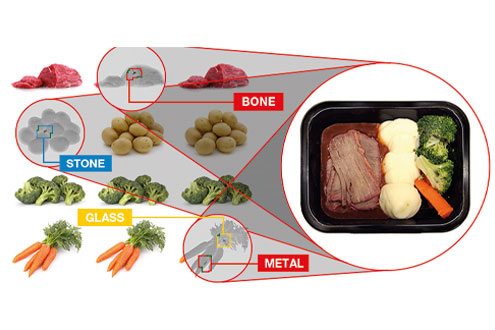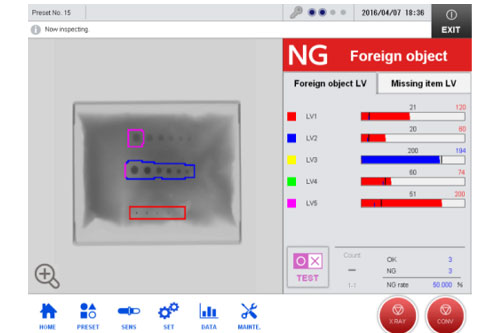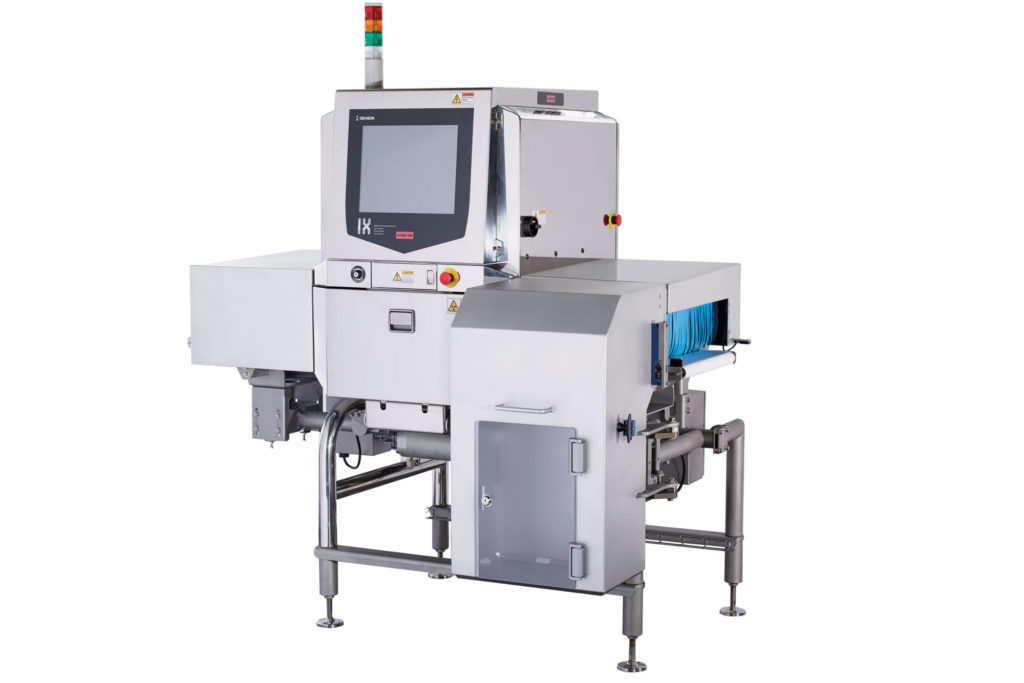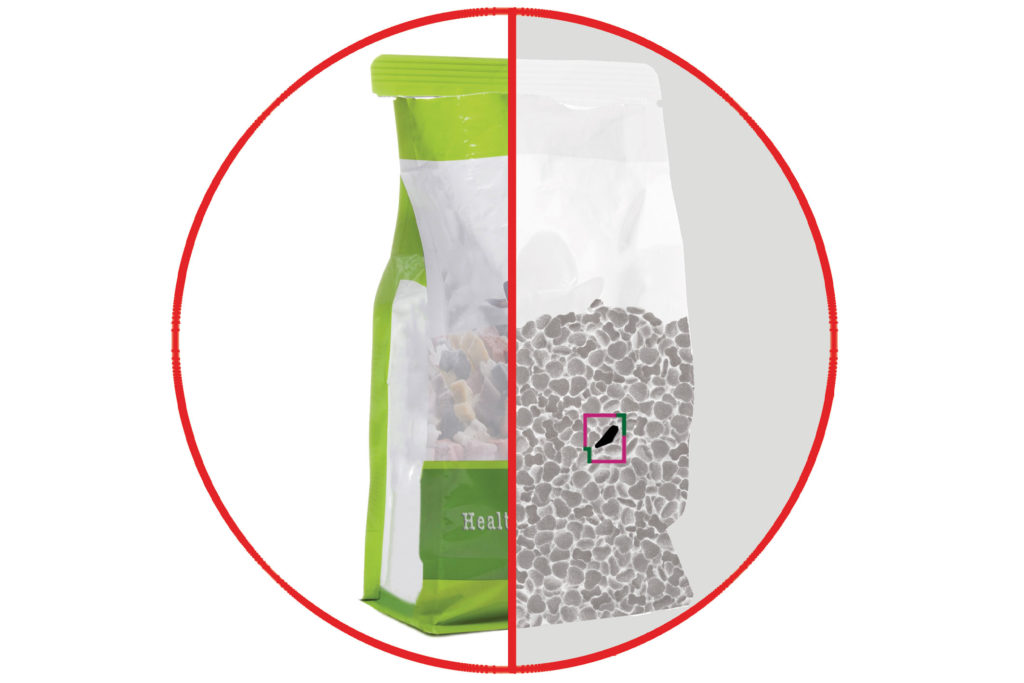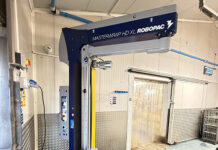Where to place an x-ray inspection system in the line can be a critical factor in achieving the best food quality and safety, explains Glen Oxborough of Ishida Europe
ADVERTORIAL
IN the continual drive for food safety and quality, x-ray inspection technology is increasingly becoming the solution of choice for many manufacturers and retailers, thanks to its ability to detect a wide variety of different foreign bodies down to very small sizes and also its versatility in offering a number of additional quality control checks.
X-ray inspection systems can spot unwanted items such as metal, glass, dense plastic, stone and rubber, with some machines identifying foreign bodies as small as 0.3mm.
In addition, its many other inspection capabilities include the detection of broken, undersized or missing items in packs, deformed product and packaging and underfilled trays, as well as checking fill levels and weight estimation.
Much of the focus on food quality and safety is aimed at the retail sector, so the focus is more on food safety for finished packs (as opposed to bulk product).
The natural inclination is therefore to install an x-ray inspection system at the end of the line to inspect filled and sealed packs. Nevertheless, for some products, quality issues and considerations can be more complex, and this may mean that an x-ray machine will be more effective when placed further upstream.
Understanding the precise requirements of each application is critical to ensuring the correct placement of an x-ray system. It is essential to examine the entire processing and packing operation, assess the characteristics of the product being packed and identify what, if any, other inspections are currently being carried out.
The benefits of placing x-ray inspection further up the line can be seen in the packing of certain ‘high risk’ raw materials.
Products such as nuts, seeds and pulses, dried fruit and fresh produce harvested from the ground have the potential to contain contaminants such as stones, grit and broken or littered items.
If product is inspected on delivery before any further processing occurs, manufacturers are able to protect their downstream production processes and also avoid the costs involved in rejecting or reworking products after other ingredients have been added and the product is packaged.
In addition, early inspection allows for traceability, with the ability to discuss foreign body issues directly with suppliers. Due diligence obligations can then be met to improve quality and food safety and to ensure preventative measures are put in place at source.
Equally important, very often these ingredients may be used for a number of different products and across several production lines.
Using a single machine for bulk inspection before the product is diverted to different lines will therefore prove more cost-effective.
Upstream x-ray inspection offers the same benefits for ingredients which are being packed in bulk for supply to the foodservice sector or for further manufacturing. In particular, products in larger size boxes and bags may be more difficult to inspect successfully – particularly for very small size foreign bodies – and it is therefore better to inspect these prior to bagging.
Inspection for bones in meat after filleting or for foreign bodies in blocks of cheese before cutting for retail packs will identify items that could potentially damage equipment further down the line.
When it comes to retail packs, many types of ready meals can present a challenge for inspecting at the final stage.
Usually the product will involve a variety of ingredients and this can make it difficult to spot foreign bodies such as a bone in a fish fillet or piece of meat.
Earlier inspection of the ingredients will enable such contaminants to be more easily identified and will again minimise the implications of rework and loss of product and packaging that would occur at a later inspection stage.
Nevertheless, one disadvantage of any earlier bulk inspection of product is that during subsequent processing and packing operations, there is still the danger that additional foreign bodies could enter the product. This may require a second inspection point once the pack has been fully sealed.
Importantly, this will provide a final inspection to ensure product quality before packs leave the factory and is usually the preferred option for retailers.
For example, for one of our customers – a manufacturer of high-quality gingerbread – we installed x-ray inspection systems to inspect both the key raw materials before processing and the finished pack.
The recipe for the product included a variety of ingredients such as oily seeds, candied orange peel and spices, along with sugar, flour, syrup and powdered whole eggs.
By including an initial inspection of the raw materials and removal of any foreign bodies before processing began, overall product safety was increased.
The good news is that there is a wide choice of x-ray and other inspection equipment available so that the incorporation of two separate machines on the line can still be an appropriate investment.
Different x-ray inspection systems are available for small- to mid-sized retail packs and display boxes, larger boxes and bags, bulk products and unpackaged products.
If the main danger during subsequent processing is from metal components in the factory equipment, a metal detector may be sufficient for the final pack inspection and this can be incorporated with a checkweigher to ensure average weight legislation is being adhered to.
It also needs to be remembered that the costs associated with poor quality product – such as recalls, retailer fines and the loss of brand reputation – can quickly dwarf any initial investment in inspection equipment.
Just as location is the prime concern for the majority of house buyers, position is a critical consideration in the search for the best x-ray inspection system.
Combined with the extensive choice of machines available, this will ensure food manufacturers can meet stringent quality and food safety requirements while maintaining throughput and efficiencies and overall brand reputation.
With over 20 years’ experience of manufacturing x-ray equipment and 11,000 units sold around the world, Ishida uses its know-how to offer the best solutions to its customers.
For Quality Inspection Solutions enquiries, please contact: glen.oxborough@ishidaeurope.com
THE Scottish market is supported by Ishida through a dedicated sales manager – Kevin Selkirk – and the support of 23 field service engineers who cover the entirety of the United Kingdom. These engineers can offer help at the point of installation while also providing technical support as well as training.
All of this is backed up by Ishida’s Sentinel, which allows Ishida to remotely monitor installed equipment, forewarning customers of issues with their solutions enabling preventative remote intervention.
To find out more or for any enquiries, please email: kevin.selkirk@ishidaeurope.com

